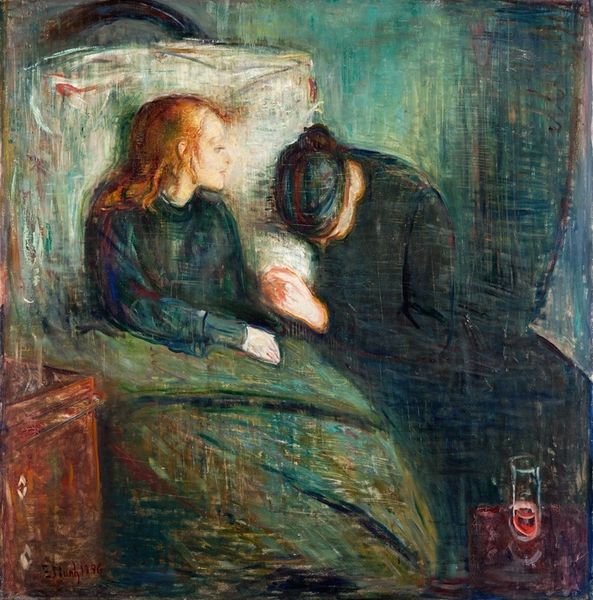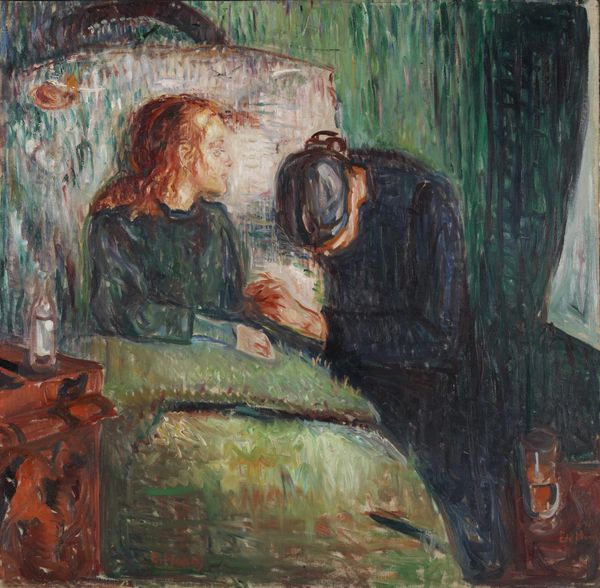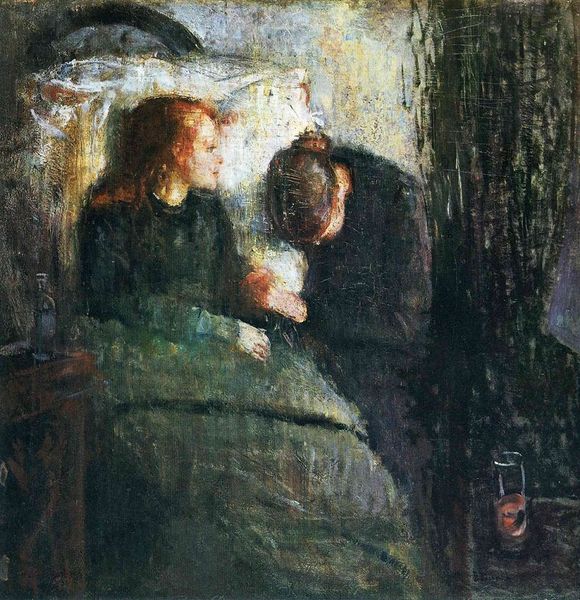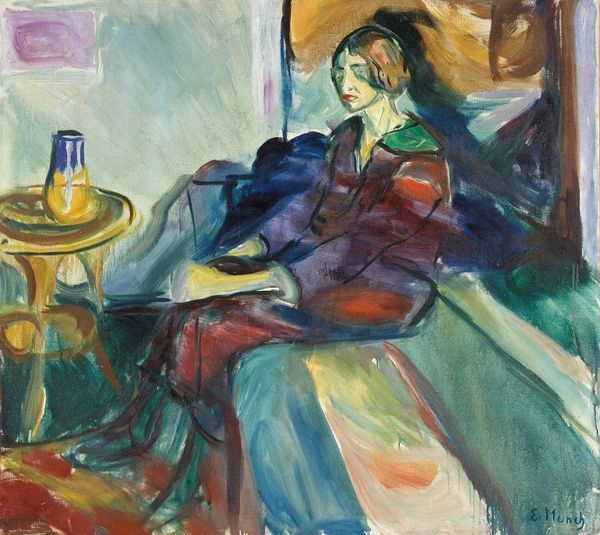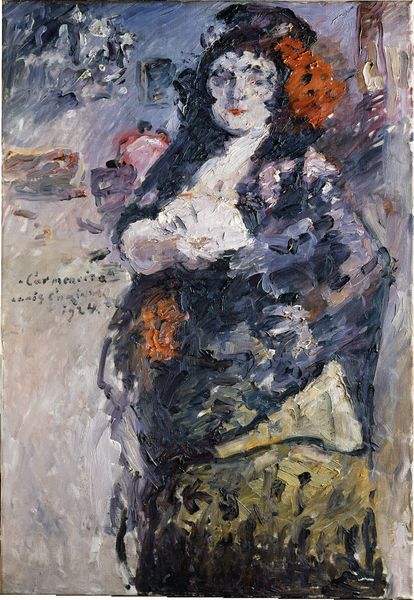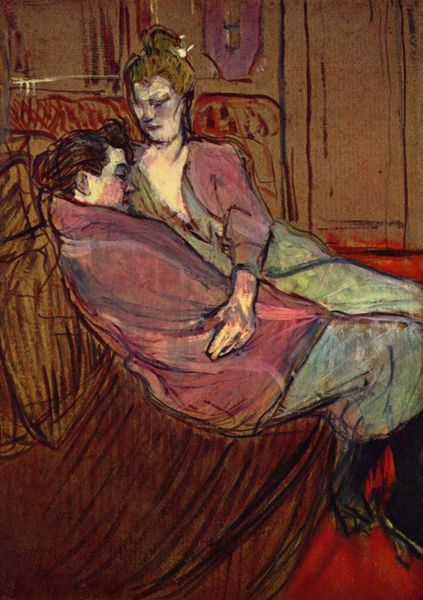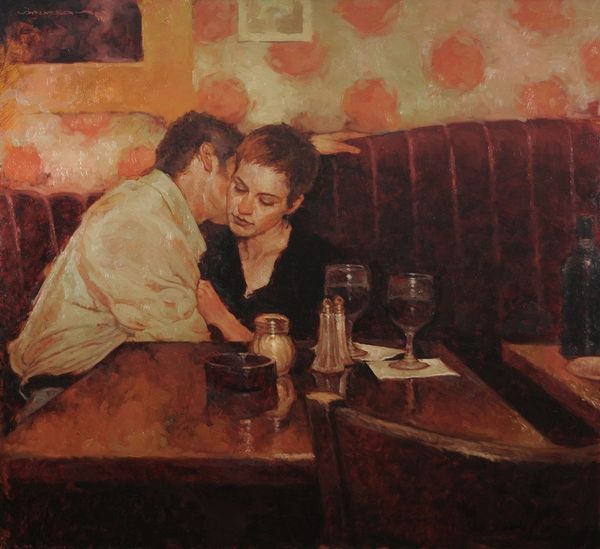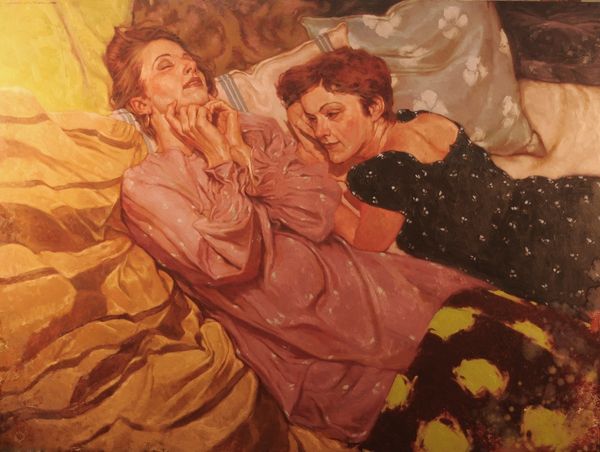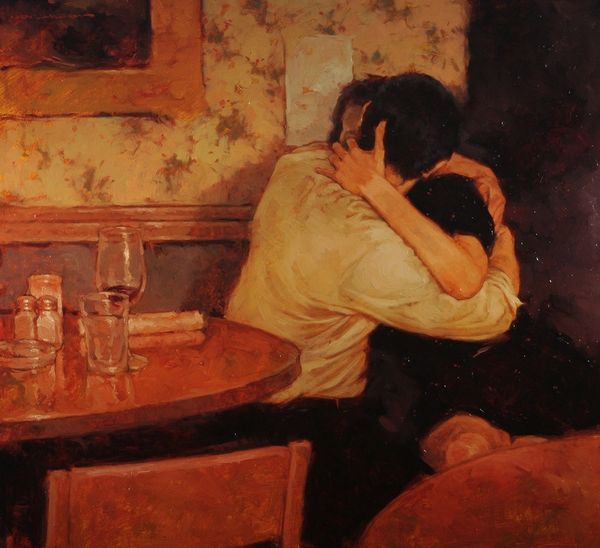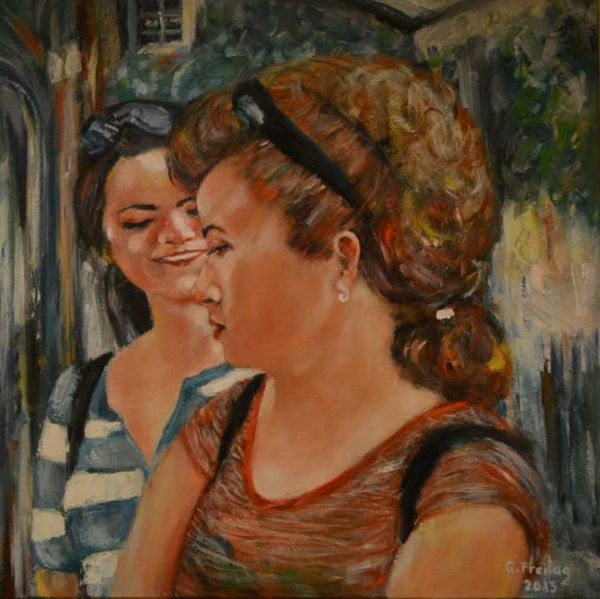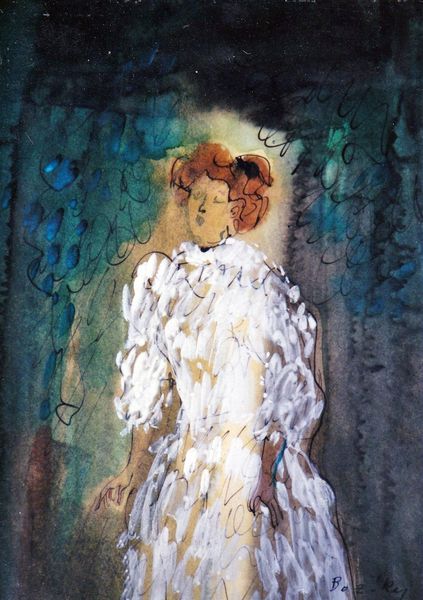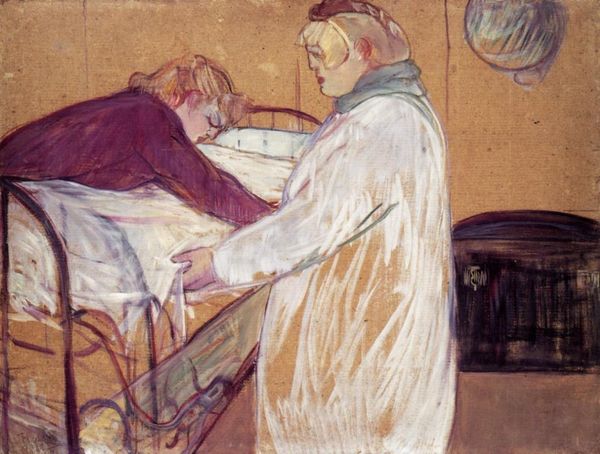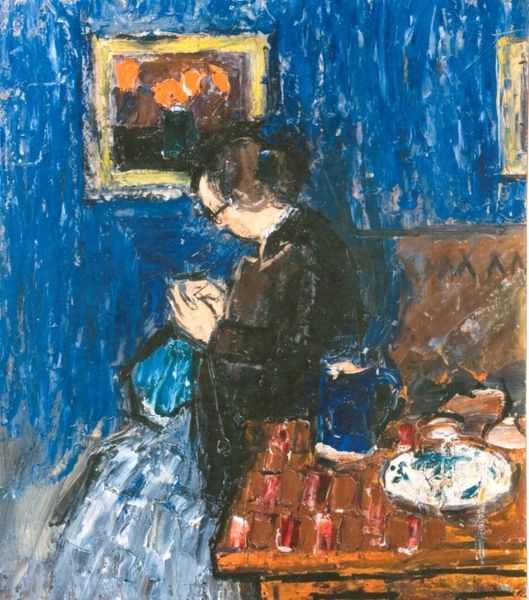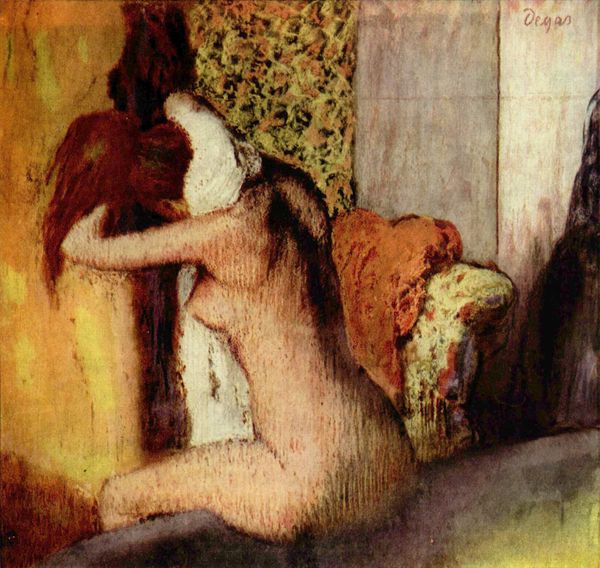
oil-paint, impasto
#
figurative
#
oil-paint
#
oil painting
#
impasto
#
neo expressionist
#
neo-expressionism
#
expressionism
#
genre-painting
#
expressionist
Copyright: Public Domain: Artvee
Editor: This is "The Sick Child" by Edvard Munch, painted in 1907 with oil on canvas. The colors are muted and the brushstrokes are really visible; the mood seems intensely sad and intimate. What draws your eye, what do you see in this piece? Curator: My eye immediately goes to the hands clasped between the figures. The image conveys empathy, but it also invokes cultural memories related to illness and mortality, particularly the loss of a child, something recurrent in art history. The downcast gaze and bowed head--common symbolisms of grief. What sort of archetypes and collective sentiments do you perceive? Editor: The grief is palpable, I agree! There's something very universal about the image, though I can’t quite articulate why. I mean, I can easily understand the artist's personal experience influencing the piece. Curator: Absolutely, art isn't created in a vacuum. The way the child's red hair is rendered almost like a halo—could that be symbolic? Hair often represents vitality, but here, it is a stark contrast to her pallor. The symbolic association of the red color with fever isn't negligible either. Do you feel a link between Munch's life events, such as his sister's death from tuberculosis, and his art? Editor: Definitely. Knowing that personal context really adds another layer of understanding and interpretation. But it makes you wonder, how much of it is just *us* projecting meaning? Curator: The key is to explore how these individual experiences tap into broader human experiences represented in visual language throughout cultures and epochs. Editor: That’s a really helpful perspective! I will remember that as I approach art from now on. Curator: Likewise!
Comments
No comments
Be the first to comment and join the conversation on the ultimate creative platform.
